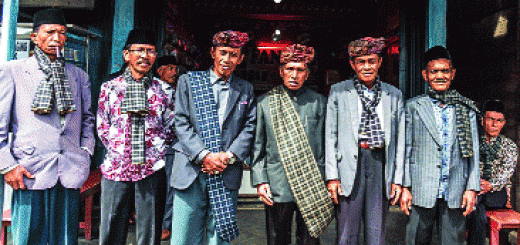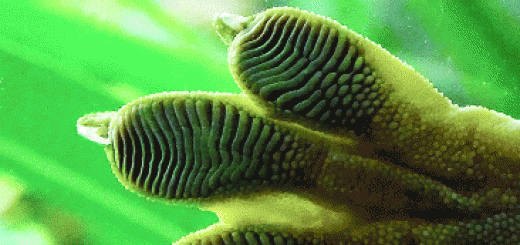Unearthing the Enigmatic Maya Civilization
Nestled deep within the lush jungles of Guatemala lies a realm untouched by time, a world shrouded in mystery the realm of the Maya civilization. Every step through the dense vegetation requires careful navigation, as we wind our way around towering trees, step over twisted roots, and duck under low-hanging branches. Guiding me through this untamed wilderness is José María Anavisca, my experienced guide, deftly wielding his machete to forge a path through the impenetrable jungle.
“Exercise caution and avoid touching anything,” José warns me, his eyes scanning the surroundings. In this untamed wilderness, danger lurks in the form of venomous snakes, poisonous spiders, and elusive creatures. Despite his warning, a sudden sharp sensation on my back startles me- a bite from an unknown insect. José quickly identifies it as an ant, assuring me that it poses no serious threat.
The scorching heat and suffocating humidity, characteristic of a June day in Tikal, Guatemala, envelop us as we venture deeper into the heart of the jungle. The landscape appears unchanging—a mesmerizing tapestry of vibrant green leaves and majestic tree trunks. We pause intermittently, retracing our steps along the verdant path. As I wipe the sweat from my forehead, I can’t help but voice my concern, “Are we lost?”
“No, no,” José chuckles, his eyes twinkling mischievously. “The Lost World, one of Tikal’s renowned ceremonial complexes, lies in that direction.” I marvel at José’s uncanny ability to navigate through the seemingly identical surroundings, relying on his intimate knowledge of the terrain.
Once hailed as the grandest city in the Maya world, Tikal now stands as Guatemala’s most renowned archaeological site. Even along the well-trodden tourist route, the rainforest reclaims its territory. The air resonates with the symphony of birdsong, spider monkeys gracefully swing through the treetops, and as dusk descends, the area surrounding the Lost World comes alive with the curious coatimundis—raccoon-like creatures scavenging for insects amidst the forest floor.
However, today we embark on an extraordinary journey beyond the well-treaded path. José aims to reveal a hidden secret, concealed from the prying eyes of most tourists an unexcavated Maya pyramid, long consumed by the relentless growth of the jungle.
But for José’s keen guidance, I would remain oblivious to our arrival. The thick foliage obscures any visible sign of the pyramid’s presence. Yet, beneath our feet, the terrain abruptly tilts upward, revealing a distinct pyramid structure. Consulting his map, José confirms our location. “It remains in its natural state, untouched and unexplored,” he explains. Recent advancements in Lidar technology, a groundbreaking remote sensing technique revolutionizing the field of archaeology, have finally provided the evidence that archaeologists have long suspected.
The Maya Biosphere Reserve, an expansive territory encompassing forests, wetlands, rivers, and savannas, presents formidable challenges to uncovering ancient structures. Lidar technology, with its ability to strip away the jungle’s leafy canopy, unveils hidden topography, forgotten sites, and lost monuments. This remarkable technology proves particularly invaluable in dense jungles like this, where the Maya civilization flourished.
In 2016, the Foundation for Maya Cultural and Natural Heritage (Pacunam) launched the largest-ever archaeological survey of the Maya lowlands, employing Lidar technology. The initial phase, completed in 2018, encompassed mapping an extensive 2,100-kilometer area within the Maya Biosphere Reserve. Researchers aspire to triple this coverage in subsequent phases, making it the world’s most comprehensive Lidar survey.
The preliminary results from the survey have already reshaped our understanding of the Maya civilization. Previously, experts estimated that during the Maya Classical period’s zenith (250-900 AD), the central lowlands sustained a population of one to two million people. However, the Lidar data has unveiled a staggering revelation: the area could have supported up to 11 million inhabitants. This significant population necessitated a more intricate infrastructure than previously envisioned, featuring raised highways and sophisticated irrigation and terracing systems.
Contrary to popular belief, the Lidar findings challenge the notion that the Maya civilization’s decline resulted from environmental collapse caused by deforestation and degradation. Instead, it highlights the Maya’s advanced engineering skills in landscape modifications. The Maya constructed terraces to increase soil productivity and prevent erosion, developed intricate irrigation systems, and even engineered the draining of wetlands for cultivation.
El Zotz, an ancient Maya city-state and archaeological site located 23 kilometers from the nearest town, provides another glimpse into this enigmatic world. Accessing El Zotz entails navigating treacherous muddy tracks, demonstrating the challenges faced by researchers in preserving these sites against looters.
At El Zotz, I bear witness to another remarkable discovery. Ascending steep stairs and maneuvering through dark tunnels, I find myself face-to-face with a monumental Maya carving—an imposing depiction of a Mayan god. This ancient sculpture, dating back to the 5th century AD, likely served as the platform for the coronation ceremonies of new kings.
Led by Edwin Román, an archaeologist, I am then guided to “El Diablo,” an intriguing site perched atop a steep hill. This temple, built atop the tomb of El Zotz’s first king, reveals its secrets from the 4th century BC. In a tunnel within the pyramid, Román unveils a series of monumental carvings portraying the Sun gods. These ancient artworks offer glimpses into the rich Maya culture that thrived centuries ago.
While Lidar technology has brought significant advancements, it does not replace the physical exploration and excavation conducted by archaeologists. Lidar data provides a comprehensive inventory of the jungle’s hidden treasures, assisting experts in identifying potential sites for further investigation. Furthermore, Lidar offers unparalleled efficiency, rapidly mapping extensive areas that would have taken years using traditional methods.
Deep within the heart of the Maya Biosphere Reserve, Lidar breathes new life into the stories of kings, dynasties, and an entire civilization. It unveils ancient structures, interconnected networks of cities, and the dramatic landscapes where the Maya lived, traded, and waged wars. This cutting-edge technology complements the Maya’s own writings, providing a holistic understanding of their remarkable civilization.
Standing before the ancient frieze of an ancestral god at Holmul, the oldest standing temple in the Maya world, I am overwhelmed with awe. The intricately etched wrinkles on the god’s face, the delicate handprints of a child, and the symbolic skull and crossbones depict a captivating narrative of death and rebirth, reminding us of the enduring presence of the Maya’s ancestors. Lidar technology, in harmony with traditional archaeological methods, ensures that the memory of these remarkable civilizations endures for millennia to come.
As we continue to explore the Maya’s enigmatic world, Lidar technology serves as our guiding light, illuminating the hidden wonders that lay concealed within the jungles of Guatemala. With each new revelation, we inch closer to unraveling the ancient mysteries and preserving the legacy of one of history’s most fascinating civilizations—the Maya.
Based on the writing by Amanda Ruggeri

















Recent Comments